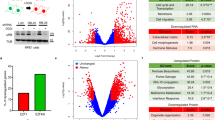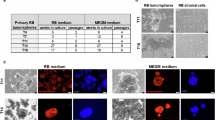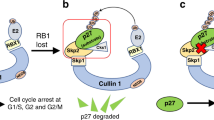Abstract
We have constructed a panel of substitution mutants which affect one or more of the putative cdk target sites of the RB protein. We have examined the activity of these mutants relative to wild-type RB by both a transcriptional repression assay and by measuring growth suppression in vitro. We find that some phosphorylation site mutants of pRB can repress E2 transcription more strongly than wild-type RB. These mutants are partially resistant to phosphorylation by cdks and can arrest tumor cells in G1 in vitro. Our results indicate a functional correlation between the ability to repress E2F-dependent transcription and the ability to suppress tumor cell growth in vitro. In addition, we describe two classes of RB mutants: N-terminal truncated p56RB and a novel mutant of RB containing multiple substitutions near its nuclear localization signal. Both classes of RB mutants have greater activity than the wild-type protein. Because RB is a key regulator of cell cycle progression, expression of a more potent, phosphorylation resistant RB may have utility in both RB(−/−) and RB(+/+) tumors as well as in hyperproliferative disorders.
This is a preview of subscription content, access via your institution
Access options
Subscribe to this journal
Receive 50 print issues and online access
$259.00 per year
only $5.18 per issue
Buy this article
- Purchase on SpringerLink
- Instant access to full article PDF
Prices may be subject to local taxes which are calculated during checkout
Similar content being viewed by others
Author information
Authors and Affiliations
Rights and permissions
About this article
Cite this article
Antelman, D., Perry, S., Hollingsworth, R. et al. Engineered mutants of pRB with improved growth suppression potential. Oncogene 15, 2855–2866 (1997). https://doi.org/10.1038/sj.onc.1201465
Received:
Revised:
Accepted:
Issue date:
DOI: https://doi.org/10.1038/sj.onc.1201465
Keywords
This article is cited by
-
The HTLV-I Tax oncoprotein targets the retinoblastoma protein for proteasomal degradation
Oncogene (2005)
-
Tissue-specific expression of an anti-proliferative hybrid transgene from the human smooth muscle α-actin promoter suppresses smooth muscle cell proliferation and neointima formation
Gene Therapy (2001)
-
The retinoblastoma tumor suppressor inhibits cellular proliferation through two distinct mechanisms: inhibition of cell cycle progression and induction of cell death
Oncogene (1999)



